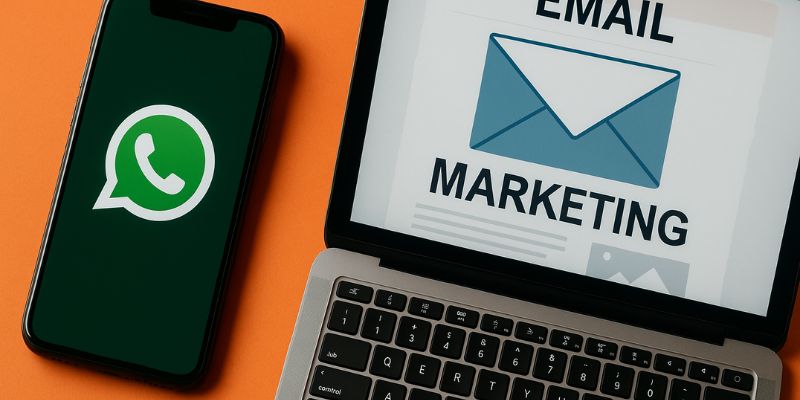Best Ways to Integrate WhatsApp with Email Marketing Tools
In today’s digital world, seamless communication is key to enhancing customer engagement and driving sales. Integrating WhatsApp with email marketing tools is a strategic way to optimize your marketing efforts. This article explores the best ways to achieve this integration, providing practical steps, advantages, and real-world examples.
Why Integrate WhatsApp with Email Marketing?
WhatsApp and email marketing serve as powerful communication channels with unique strengths. While email is excellent for long-form content and detailed information, WhatsApp is perfect for instant communication and personal interaction. Integrating these platforms allows businesses to leverage the strengths of both, ensuring a cohesive and comprehensive communication strategy.
- Increased Engagement: By combining email’s extensive reach with WhatsApp’s personal touch, you can significantly boost customer engagement.
- Cost-Effectiveness: Using WhatsApp alongside email can reduce costs associated with traditional SMS marketing.
- Improved Customer Experience: Offering multiple channels for interaction enhances customer satisfaction and loyalty.
How to Integrate WhatsApp with Email Marketing Tools
Integrating WhatsApp with email marketing tools requires a strategic approach. Here are some practical steps to guide you through the process:
- Choose the Right Tools: Ensure that the email marketing tool you are using supports integration with WhatsApp. Platforms like Mailchimp, HubSpot, and Sendinblue offer such capabilities.
- Set Clear Objectives: Define what you aim to achieve with this integration, such as increasing engagement rates or enhancing customer support.
- Use APIs: Leverage APIs to connect WhatsApp with your email marketing tool. This allows for automated messaging and data synchronization.
- Segment Your Audience: Use data from both platforms to create targeted segments and tailor your messages accordingly.
- Automate Follow-Ups: Create automated follow-up messages on WhatsApp for email campaigns that require immediate attention.
Benefits of Integrating WhatsApp with Email Marketing
Integrating WhatsApp with email marketing offers several benefits that can transform your marketing strategy:
- Real-Time Communication: WhatsApp enables instant messaging, providing a platform for real-time customer interactions.
- Personalization: Using data from both platforms, you can create personalized messages that resonate with your audience.
- Enhanced Analytics: Gain insights into customer behavior by analyzing data from both email and WhatsApp interactions.
Real-World Examples of Successful Integration
Many businesses have successfully integrated WhatsApp with their email marketing efforts, reaping significant benefits:
- Retail Brands: Companies like Zara and H&M use WhatsApp to send personalized offers and updates, complementing their email campaigns.
- Service Providers: Travel agencies and hospitality services use WhatsApp to provide instant customer support, while email handles detailed itineraries and confirmations.
Challenges and Solutions
Despite the advantages, integrating WhatsApp with email marketing can present challenges:
- Privacy Concerns: Ensure compliance with data protection regulations, such as GDPR, when handling customer data.
- Technical Complexity: While APIs facilitate integration, they may require technical expertise. Collaborate with IT professionals to ensure a smooth process.
- Message Overload: Balance the frequency of messages to avoid overwhelming your audience.
Tips for Effective Integration
To maximize the effectiveness of your integration, consider the following tips:
- Consistency: Maintain a consistent brand voice across both platforms to ensure a unified customer experience.
- Test and Optimize: Regularly test your campaigns and use analytics to optimize your strategies.
- Engage Responsively: Use WhatsApp to promptly respond to customer inquiries, complementing the informative nature of email.
Conclusion
Integrating WhatsApp with email marketing tools is a powerful strategy to elevate your marketing efforts. By combining the strengths of both platforms, you can enhance customer engagement, improve communication, and drive business growth. Implementing the steps and tips outlined in this article will help you achieve a successful integration, providing a seamless experience for your audience.
Frequently Asked Questions
What are the benefits of integrating WhatsApp with email marketing?
Integrating WhatsApp with email marketing enhances engagement, personalizes communication, and offers real-time interaction, improving overall customer experience.
Which tools support WhatsApp and email marketing integration?
Tools like Mailchimp, HubSpot, and Sendinblue support integration with WhatsApp, offering features to synchronize data and automate messaging.
How can I ensure data privacy when integrating WhatsApp with email marketing?
Ensure compliance with regulations like GDPR by obtaining customer consent and using secure platforms to handle data.
Can small businesses benefit from integrating WhatsApp with email marketing?
Yes, small businesses can leverage this integration to increase engagement, reduce costs, and provide personalized customer support.
What challenges might I face when integrating WhatsApp with email marketing?
Challenges include privacy concerns, technical complexities, and the potential for message overload, which can be mitigated with careful planning and strategy.
How do APIs facilitate the integration of WhatsApp and email marketing tools?
APIs allow for automated data synchronization and messaging between WhatsApp and email marketing tools, streamlining communication processes.
What role does audience segmentation play in this integration?
Audience segmentation allows for targeted messaging, enhancing personalization and engagement by delivering relevant content to specific groups.
How can I measure the success of my WhatsApp and email marketing integration?
Use analytics tools to monitor engagement rates, conversion rates, and customer feedback to evaluate the success of your integration efforts.
What are some examples of successful WhatsApp and email marketing integration?
Retail brands and service providers like Zara and travel agencies use this integration to offer personalized offers and instant support, enhancing customer satisfaction.
